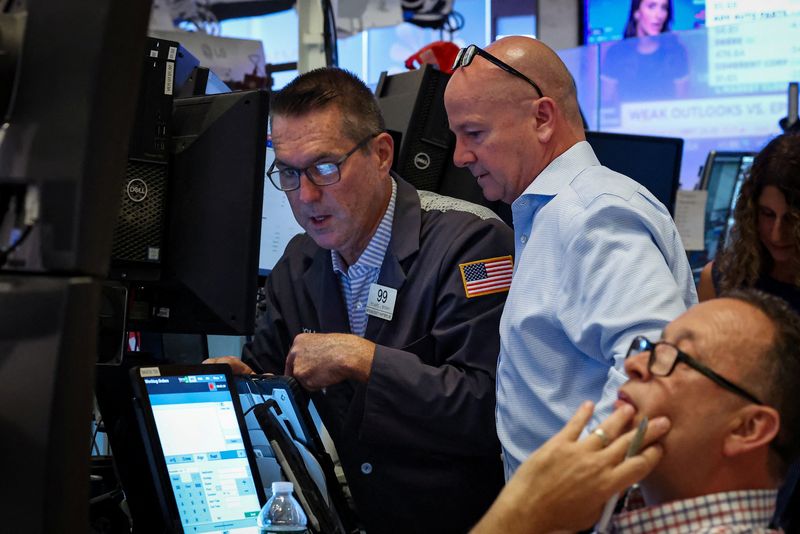
By Johann M Cherian and Sanchayaita Roy
(Reuters) - The blue-chip Dow briefly hit a record high on Friday, as UnitedHealth's shares jumped after Berkshire Hathaway raised its stake in the health insurer, while investors assessed mixed data to gauge the Federal Reserve's monetary policy path this year.
UnitedHealth Group gained 11.6% to hit a more than two-month high after Warren Buffett's company revealed a new investment in the health insurer, while Michael Burry's Scion Asset Management also turned more bullish on the company.
Rising costs in the broader healthcare sector and an about 40% slump in heavyweight UnitedHealth's shares this year have left the Dow lagging its Wall Street peers on the road to record highs. The price-weighted index last scaled an all-time high on December 4.
This week, however, the healthcare sector is the top performer on the S&P 500 and is on track for its best weekly performance since October 2022.
Other insurance stocks Centene and Molina gained 5.2% each.
A report showed retail sales in July rose as expected, but the University of Michigan's index tracking consumer confidence fell more than expected to 58 as inflation expectations rise.
"As long as consumer spending holds up and companies are able to retain workers because of that robust spending, the flywheel can continue to spin, pushing corporate profits and stock prices higher," said Chris Zaccarelli, chief investment officer for Northlight Asset Management, speaking on the retail sales figures.
At 10:11 a.m. ET, the Dow Jones Industrial Average rose 99.11 points, or 0.22%, to 45,011.45, the S&P 500 lost 7.39 points, or 0.11%, to 6,461.15 and the Nasdaq Composite lost 30.70 points, or 0.14%, to 21,681.10.
Wall Street's main U.S. stock indexes are on track for their second week of gains, buoyed by expectations that the Fed could restart its monetary policy easing cycle with a 25-basis-point interest rate cut in September.
The central bank last lowered borrowing costs in December and said U.S. tariffs could add to price pressures. However, recent labor market weakness and signs that tariff-induced inflation was yet to reflect in headline consumer prices have made investors confident of a potential dovish move next month.
Still, Chicago Fed President Austan Goolsbee said recent data reports showed a stagflationary impulse from tariffs on the economy.
On the trade front, U.S. President Donald Trump said he would unveil tariffs on steel and semiconductors next week.
Applied Materials tumbled 11.3% after the chip equipment maker issued weak fourth-quarter forecasts.
Intel rose 3% after a report said the Trump administration was in talks for the U.S. government to potentially take a stake in the chipmaker.
Attention was also on a meeting between Trump and Russian counterpart Vladimir Putin that markets hope could pave the way for a resolution to the Ukraine conflict. The meeting will take place at 1900 GMT.
Declining issues outnumbered advancers by a 1.22-to-1 ratio on the NYSE and a 1.31-to-1 ratio on the Nasdaq.
The S&P 500 posted 8 new 52-week highs and no new lows while the Nasdaq Composite recorded 52 new highs and 45 new lows.
(Reporting by Johann M Cherian and Sanchayaita Roy in Bengaluru; Editing by Devika Syamnath)

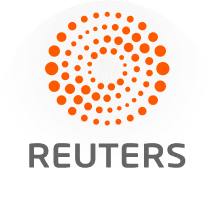 Reuters US Domestic
Reuters US Domestic
 WMBD-Radio
WMBD-Radio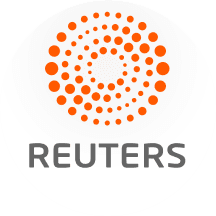 Reuters US Economy
Reuters US Economy Benzinga
Benzinga NBC News
NBC News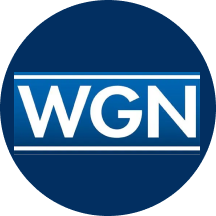 WGN Radio 720 Business
WGN Radio 720 Business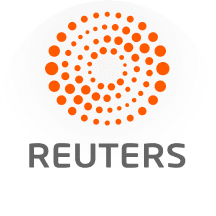 Reuters US Business
Reuters US Business The Daily Beast
The Daily Beast